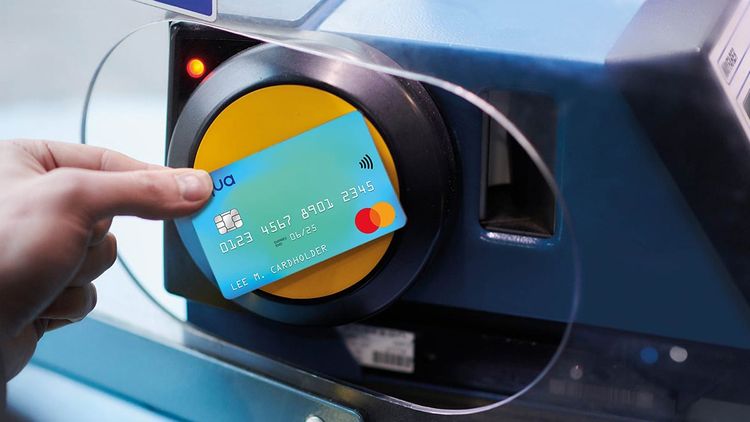In this article
How does credit card interest work?
Learn about how credit card interest works, including how it's calculated, when it's charged, and strategies to avoid or manage it.

Credit card interest is a familiar term but often deemed unfamiliar in how it actually works.
In simple terms, it’s what you pay when a balance is carried forward, take cash out, or miss a payment. But by digging deeper into how interest works, you’re in a stronger position to pay less over time.
From understanding how interest is calculated and when you’ll pay it, to different types of interest and how to manage your card, here’s everything you need to know about credit card interest.
What is credit card interest?
Credit card interest is a fee you pay when a balance is carried forward from one billing cycle to the next. Although the fee is calculated daily, it’s usually charged monthly and listed separately on your statement.
To avoid the possibility of paying interest on your credit card, it’s best to pay off what you borrow in full every month. You should also get into the habit of only borrowing what you can afford to pay back.
What’s the difference between credit card interest and APR?
‘Interest’ and ‘APR’ (annual percentage rate) generally mean the same thing when it comes to credit cards, with the exception that APR can also include other costs such as application fees, admin fees, and balance transfer fees.
With other types of borrowing, such as a loan or mortgage, APR also differentiates from interest in that it incorporates other financial-related charges including application fees, origination fees, and more.
Types of credit card interest
Depending on how you use it, some credit cards might be a better fit for your spending habits than others. Here’s an overview of the types of interest that come with various cards.
Purchase rate
This is a rate most commonly associated with credit cards which specifies the rate of interest (APR) you’ll pay on a balance carried forward after buying goods or services on your card.
Balance transfer rate
A balance transfer is when you move your balance from one card to another, which typically comes with a balance transfer fee, on top of your balance transfer interest rate.
Cash transaction rate
This refers to the interest rate and fees you might pay with cash withdrawals on your credit card. Fees are often based on a percentage of the withdrawal amount, plus daily interest.
Money transfer rate
When you move money directly from your credit card to a current account, it usually comes with a money transfer fee as well as your money transfer rate.
Penalty rate
A penalty rate might be applied when a cardholder violates the terms and conditions set out by the lender, often resulting in a higher interest rate applied to the outstanding balance, plus late fees.
Fixed rate
A fixed rate means the rate on your credit card won’t be influenced by any market fluctuations. The only instance when a fixed rate might change is if a cardholder violates any terms and conditions.
Variable rate
In contrast to fixed rates, a variable rate is when the interest or APR attached to your credit card can vary over time in response to market fluctuations.
Promotional rate
Promotional rates are typically a lower-than-usual interest rate offered for a limited period on specific credit card transactions, such as buying goods or transferring a balance.
Aside from interest, you could also be charged other fees. For that reason, it’s smart to assess all your borrowing options, potential fees, and types of interest you could pay before you choose a credit card.
How to calculate credit card interest?
Credit card interest is what you’re charged for borrowing money. How much you pay depends on the interest rate, as well as how much money you borrow and when it’s paid back.
To calculate credit card interest, divide your APR (let’s say it’s 18%) by 365 (number of days in the year): 18% ÷ 365 = 0.049% per day. You might find your card issuer determines this rate using 360 days, so always check the terms and conditions.
If you carry a balance on your credit card, you’ll be charged interest (and it’s not just a flat fee once a month). Credit card interest is typically compounded daily, which means interest is charged on what you owe plus the interest that’s already been added.
In other words, you’re not just paying interest on your original balance but you’re paying interest on interest, which is why credit card debt can grow so quickly if you only make minimum payments.
For example, if you have a balance of £800 with a daily rate of 0.00049, the first day’s interest is £0.39. But the following day, you’ll be charged interest on £800.39, and the number grows from there.
At the end of your billing cycle, all those daily charges are added up into one interest charge on your statement. That’s why it’s always best to pay off what you borrow in full each month.
When do you pay interest on a credit card?
Interest on a credit card is typically charged at the end of each billing cycle, which is the period between two consecutive billing periods. In most cases, these cycles are monthly, but they might vary depending on the card issuer, so it’s always good to check.
It could also be the case that your credit card comes with a grace period – a limited period of time where you can avoid paying interest on purchases, provided your balance is paid off by the next due date.
If you don’t pay off your balance by the end of the cycle, it’s likely you’ll pay interest on the amount carried forward. You can also expect to pay interest on other credit card transactions, such as:
Cash advances which involve withdrawing cash using your credit card which might come with higher interest rates as well as one-off fees.
Balance transfers which typically come with a fee based on a percentage of the total balance transfer amount.
In all instances, it’s important you pay off your balance as soon as possible. By carrying a balance forward or missing payments, you could be faced with higher interest rates, as well as impacting your credit score.
How to avoid paying too much interest on your credit card
Paying interest on your credit card can make it more challenging to clear your debt. There are, however, steps you can take to reduce the chances of paying more than you need to.
Pay your balance in full each month
Clearing your balance in full each month will not only protect you from paying interest, but also keeps your credit utilisation low and goes a long way to protecting your credit score.
It’s also worth noting some credit cards come with a grace period, which lasts at least 21 days starting from your monthly statement date. Paying your balance during this window means no interest on purchases.
Avoid cash advances
If you can, it’s best to avoid cash advances on your credit card. Unlike a grace period that comes with regular purchases, withdrawing cash on your card often involves a higher APR plus additional fees.
By using your credit card for cash advances, you can also expect interest to accrue immediately which can lead to increased debt and a negative impact on your credit score.
Use a balance transfer
A balance transfer is when a credit card holder wants to save money by moving high-interest debt from one card to another with a 0% or low-interest introductory period. Once the promotional period has finished, interest is applied to the outstanding balance.
Before you sign up for a balance transfer credit card, bear in mind you could be charged an upfront fee of 3% to 5% of the total transfer amount. You might also be charged for any new purchases made beyond the original transferred balance.
Set up payment reminders
Setting up automatic payments or payment reminders is a smart way to stay on track with your finances. It means you’re far less likely to miss a payment deadline which often leads to interest and late fees added to your balance.
If you’re an Aqua customer, you can set up payment reminders in the Aqua app which will remind you when payments are due. Alternatively, you can schedule payment reminders using the in-app calendar. Whatever works best for you.
Avoiding credit card interest not only protects your credit score, but also makes it easier to get out of growing debt. To stay on track, you should avoid cash advances, pay your balance in full each month, and use a credit card that makes it easier to build better credit.
With an Aqua credit card, you have the power to take control of your finances. As well as the ability to set up payment reminders, you’ll also get access to Aqua Coach, our free credit-building tool designed to help Aqua customers get better at credit management.
Powered by TransUnion, Aqua Coach provides you with detailed information on your credit score, what factors have the biggest impact, and what areas you can improve on.
Representative 39.9% APR (variable) on Aqua Classic.
Failure to make payments on time or to stay within your credit limit means that you will pay additional charges and may make obtaining credit in the future more expensive and difficult.
Contributors

Hayley Bevan
Hayley is an editor at Aqua.

Victoria Smith
Victoria is an editor at Aqua.
You might also like
Slide 1 of 3
Carrying a credit card balance
Learn what it means to carry a credit card balance and how this could affect your credit score.
Vanessa Stewart

How credit card payments work
Learn how credit card payments work, how and why credit card charges are applied and how to manage payments.
Victoria Smith

Does a balance transfer affect your credit sc...
Discover the impact of balance transfers on your credit score, as we help you make the best decisions for building ...
Jide Davies
The smart way to build better credit
Aqua is the credit card that gives you the power to improve your credit score
